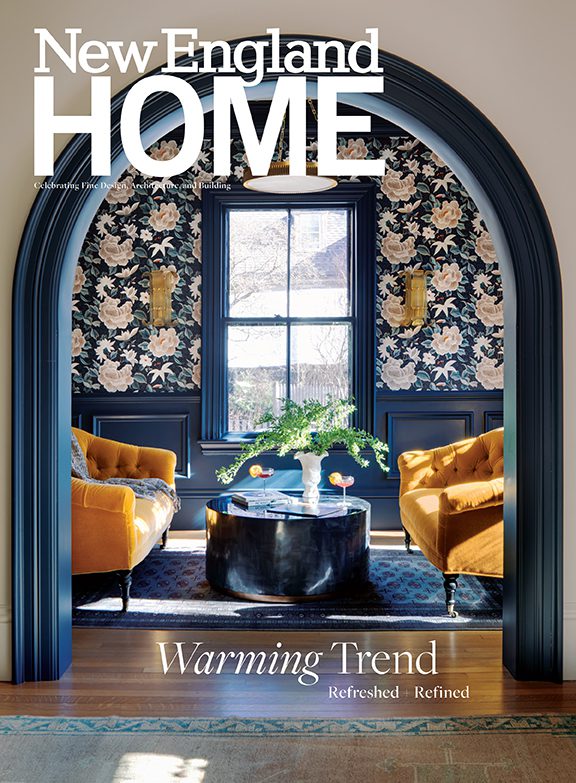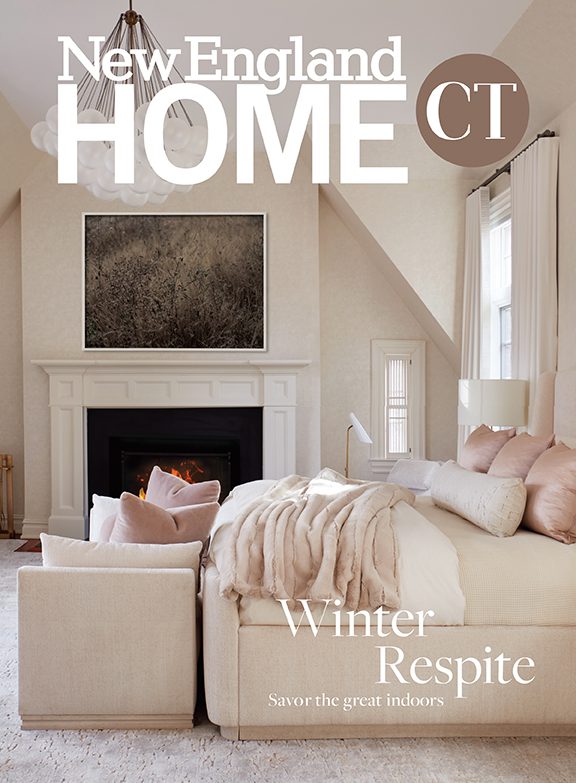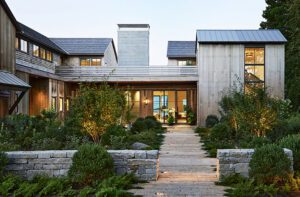At Home with Architect David Sharff
August 21, 2024
After nearly thirty years in business, one architect realizes his dream of a historic-meets-modern home in Boston.
Text by Erika Ayn Finch Photography by Michael J. Lee Produced by Sean William Donovan
When it came to their first shared home together, architect David Sharff and his new wife knew exactly what they wanted—right down to the address. But securing a corner brownstone on one of Boston’s most storied streets was going to take patience. After searching in earnest for three years, the couple was just about ready to branch out into surrounding neighborhoods when their realtor alerted them to a condo coming on the
market. “We’d walked by it for years,” recalls Sharff. “There were always young kids playing in the yard.”
The duo snatched up the 1872-built condominium, which included a garden level, ground level, and second floor. Within the year, they had the opportunity to purchase condos on levels three and four, taking over ownership of the entire building. Almost immediately, Sharff and his team began restoring the building’s exterior before moving on to the interior, where the couple had very specific goals.
“It needed to be comfortable for the two of us to live and work in every day, but we also needed the space to entertain friends and family,” says Sharff. “And while we wanted to preserve the home’s historic feeling, we also wanted to infuse it with our love of modern design and contemporary art.”
Intent on respecting each room’s original proportions, Sharff says the biggest architectural change they made was replacing the traditional newel-post staircase with a modern, sinuous plaster version. To help make his vision a reality, Sharff called on C-Concept Corporation owner Richard Cantelli and project manager Paul Marie. “The challenge with remodeling existing brownstones is that nothing is level,” says Cantelli. “It is important to remove all the walls, floors, and stairs, and then rebuild. And for a home with this kind of detail, there are no tolerances.”
Those details include reveal joints at the base of the walls that give the impression each one is hovering just off the custom-stained white-oak flooring. Doorways forgo casings, light fixtures are plastered into ceilings, and faceplates disappear into walls. As a result, original architectural details like the kitchen and dining room’s intricate dentil molding stand out even more.
Sharff worked with Liaigre’s New York showroom on the furniture, and he consulted with interior designer Leslie Fine on furniture, fabrics, drapery, and stone. But it was Sharff and his wife who landed on the sublime de Gournay silk wallcovering that depicts a willow tree and envelopes an unusually shaped niche in the living room, turning the space into an art installation. “It anchors this end of the room and balances
the view of the trees you see outside the bay window at the other end,” Sharff explains.
Though he may be pragmatic about some of the design decisions, Sharff’s enthusiasm for details like the differentiation in interior doors, his love of texture and patina, and his commitment to reducing his family’s exposure to chemicals comes through when he talks about the home. And while he’s helmed his own firm since 1996, this was the first time he’s taken on a project of this magnitude for himself.
“When you’re working with a client, you’re tapping into their vision and editing their ideas,” he says. “But when you’re designing for yourself, of course you’re strongly influenced by your partner, but you also have this data bank of possibilities. You start to discover a new design methodology, and when you factor in the marriage of contemporary design with a historic building, you hone your style in the process.”
Project Team
Architecture: David Sharff Architect
Interior design: David Sharff Architect, Leslie Fine Interiors, Liaigre
Builder: C-Concept Corporation
Landscape design: ZEN Associates
Share
![NEH-Logo_Black[1] NEH-Logo_Black[1]](https://b2915716.smushcdn.com/2915716/wp-content/uploads/2022/08/NEH-Logo_Black1-300x162.jpg?lossy=1&strip=1&webp=1)





















You must be logged in to post a comment.